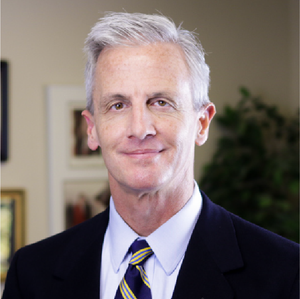
Education
Brandon Dutcher | January 23, 2023
The sky won’t fall when Oklahoma empowers parents
Brandon Dutcher
Sometimes the special interests who run Oklahoma’s public school monopoly evince an unnerving lack of confidence in their own product.
Examples abound. Former Norman superintendent Joe Siano once declared breathlessly that Education Savings Account (ESA) legislation “will harm our public schools beyond the point of no return”—as if parents would flee the public schools like rats from a sinking ship if given the opportunity.
Duncan superintendent Tom Deighan said supporters of taxpayer-funded school choice aim to “dismantle all public schools.” The Enid newspaper said Gov. Kevin Stitt and state Superintendent Ryan Walters are “working toward dismantling” the public education system. The tax-and-spend activist group Oklahoma Parent Legislative Action Committee (PLAC) suggested that the State Board of Education itself may soon include individuals who seek to “dismantle public schools.”
Former Tulsa superintendent Keith Ballard once said ESAs would have “a disastrous effect on public schools.” Oklahoma City teacher Melissa Smith said vouchers would siphon money from public schools, which “will destroy public schools.” Former Stillwater teacher Alberto Morejon said the thought of tax dollars following the child is “scary” because “if fully implemented, it would result in public schools completely closing.”
The McAlester paper said Oklahoma “should not privatize education and leave public schools to die.” Bixby superintendent Rob Miller once said ESAs would deal a “mortal blow” to public education and do “irreparable harm to our nation.” Tulsa teacher-union boss Shawna Mott-Wright said school-choice proponent Ryan Walters “is basically going to murder public education.”
Whew. One is reminded of Isabel Paterson’s query from 80 years ago: “Do you think nobody would willingly entrust his children to you to pay you for teaching them? Why do you have to extort your fees and collect your pupils by compulsion?”
Calm Down, People
It turns out the hysteria is unjustified. Researchers Jason Bedrick and Ed Tarnowski looked at the predictions of educational-choice opponents in various states through the years and discovered that these opponents “recycle the same false prophecies of doom without regard to the evidence or the size and scope of the proposals.
“The evidence shows that these predictions of financial and academic disaster have not materialized. In states with the oldest and largest educational choice policies, the inflation-adjusted per-pupil funding has increased, and the average performance of district schools is as good or better than when the choice policies were first enacted. Indeed, a mountain of evidence points to the choice policies having modest but statistically significant positive effects on district school performance.”
Researchers Marty Lueken and Michael Castro add that the doomsayers’ “overwrought claims are hard to square with our work and many other analyses of education-choice programs, including a recent study that showed students participating in choice programs, including programs that have been around for multiple decades, represent just two percent of all publicly funded students in the states that operate these programs.”
Look no further than Oklahoma, where sky-is-falling rhetoric abounded in 2010 and 2011 as Oklahoma was creating its private-school voucher and tax-credit scholarship programs. (Former state Rep. Jason Nelson has the receipts.) More than a decade has passed, and what do you think the participation rate is in our voucher program? It’s 0.81 percent. In our tax-credit scholarship program it’s 0.15 percent.
When Senate leader Greg Treat’s proposal for a universal ESA was considered in 2022, one fiscal note estimated that 1% of eligible students would participate in the program during the first year.
Two states actually have universal or near-universal ESA programs right now. Lueken tells me that the latest participation numbers from Arizona—a state that has had choice for decades and has multiple choice programs (and thus a citizenry with a greater awareness of educational options)—imply a take-up rate of about 2.6 percent. In West Virginia it’s 1.5 percent.
Not exactly the way to “murder public education” or harm it “beyond the point of no return.”
Rural-School Killer?
Some of Oklahoma’s Chicken Littles especially love to play up the rural angle.
Democratic gubernatorial candidate Joy Hofmeister said school choice is “a rural school killer” and letting the money follow the child would result in the “dismantling of public schools.” State-superintendent candidate Jena Nelson said “many of our rural schools would probably have to close down because of these vouchers.” She said school vouchers “are a way to defund public education and they are a rural school killer.”
The group Oklahoma’s Children Our Future said Gov. Stitt was “a danger to rural public schools” and that Ryan Walters’ education plan was to “shut our schools down, kill our small towns, and force great teachers to quit.”
Oklahoma Rural Schools Coalition founder Erika Wright said school choice could “decimate our schools,” warning that rural schools might “close shop.” Former El Reno superintendent Craig McVay said if Stitt and Walters were elected, “some rural public schools will be forced to close their doors for good.”
But again, these claims strain credulity. A new report from Florida (a state that already has school choice in rural areas) shows that school-choice programs have benefited rural students without harm to local public schools.
And in a new Heritage Foundation paper on educational choice in rural America, Jason Bedrick and Matthew Ladner examine Arizona, “which has a robust education choice environment and more than one-third of its K-12 students living in rural areas.
"Are Arizona’s rural school districts withering and dying because of school choice, as the critics predicted? Hardly. The National Center for Education Statistics listed 224 regular school districts in Arizona in 1993, the year before choice began. In 2019 the same source listed 226 Arizona regular school districts.
“Of course, it’s possible for schools to be harmed without shutting down,” they acknowledge. But their examination of the data shows that’s not the case: “Arizona’s rural schools, districts, and counties show high levels of academic growth.”
In short, “the Arizona experience with rural school choice since 1995 does not support the notion that school choice will either ‘destroy’ or even damage rural education outcomes. Indeed, Arizona’s results indicate that it is more likely that rural students and families benefit from having access to a wide variety of learning options.”
For years and years, school-choice opponents have claimed the sky will fall on public education if parents are empowered with more options. It’s time for the special interests who run the public school monopoly to show a little more confidence in their own schools. If parents are satisfied, they won’t leave.

Brandon Dutcher
Senior Vice President
Brandon Dutcher is OCPA’s senior vice president. Originally an OCPA board member, he joined the staff in 1995. Dutcher received his bachelor’s degree in political science from the University of Oklahoma. He received a master’s degree in journalism and a master’s degree in public policy from Regent University. Dutcher is listed in the Heritage Foundation Guide to Public Policy Experts, and is editor of the book Oklahoma Policy Blueprint, which was praised by Nobel Prize-winning economist Milton Friedman as “thorough, well-informed, and highly sophisticated.” His award-winning articles have appeared in Investor’s Business Daily, WORLD magazine, Forbes.com, Mises.org, The Oklahoman, the Tulsa World, and 200 newspapers throughout Oklahoma and the U.S. He and his wife, Susie, have six children and live in Edmond.